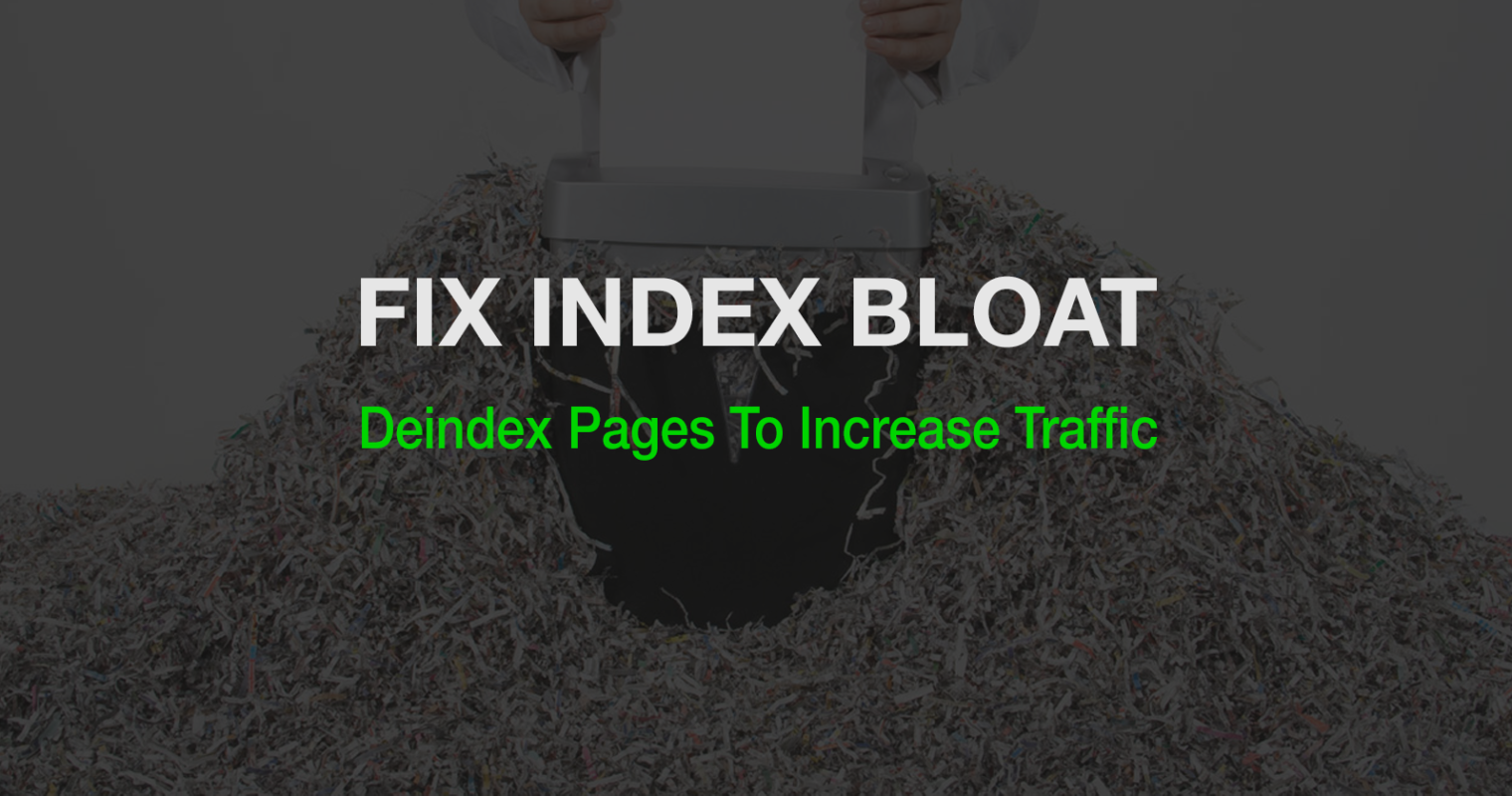Description: A problem faced by a number of digital marketers in the past few years is that of index bloat. Due to a high number of low-quality pages of a website, its rankings tend to drop on search engines. The article focuses on the ways to solve Index Bloat.
Index Bloat

Imagine there is a car showroom selling one of the best cars in the world. A customer arrives at the showroom to buy this car. However, when the customer walks in, he can’t see the car. Instead, there are a number of other average cars in the showroom. None of them are as good as the best car.
After glancing at the average cars for a while, the customer shakes his head and leaves. The car salesman rushes to him and asks if something is wrong. The customer says he couldn’t see the car he came to buy. The salesman says that the car is at the far end of the corridor.
Astonished, the customer says, ‘Then keep it there’
The problem of index bloat runs on similar lines. Digital marketers spend years building webpages on their website, but often forget to look back and see which pages are not performing well. Non-performing pages are usually considered low quality by search engines, leading to a site’s overall rankings dropping off.
Index bloat has thus become a problem for digital marketers. In this article, we will suggest some methods to tackle the problem of index bloat and improve rankings on search engines.
What Causes Index Bloat?
A number of issues can cause index bloat
- Thin Content- Any content which adds no value to the users can be deemed as thin content. Thin content can be duplicated content from other websites rearranged to pass plagiarism tests. Old and useless affiliate pages along with doorway pages are also counted amongst thin content.
- Internally Duplicated Content- This refers to a similar type of content spread across the same website. When ten different blogs on a website use the same content, the value of the content drops and causes index bloat.
- Pagination- Often, a website chooses to divide a blog or article into different webpages, like a listicle or slide show. This is also found on e-commerce websites which have a number of product pages which appear when someone searches for a product. Since each of these pages has the same title, meta description and usage of keywords, search engines tend to consider them as duplicate pages. This only furthers the problem of index bloat.
- Low-Performing Pages- There are many pages on a website which tend to perform poorly. Such pages tend to have a high bounce rate and do not have any backlinks. Such low performing pages end up costing the website a sharp fall in rankings and cause index bloat.
The problem of index bloat can be identified by using a number of analytic tools. Even a website’s XML sitemap is enough for a digital marketer to find non-performing pages and remove the problem of index bloat.
How to Solve Index Bloat?
Once the cause of index bloating has been identified, digital marketers can use the following methods to overcome the problem.
-
Deleting the Pages
The easiest way to solve index bloat is deleting the low-quality pages. Doing so reduces the useless pages indexed on search engines and helps give the site rankings a push.
-
Add Noindex
Using noindex, digital marketers can choose to remove certain pages from the XML sitemap and thus stop them from being indexed from search engines. Non-performing pages like testimonials, authors, and blog tags can be removed from XML sitemaps using this method.
-
Use Robots.txt
Though not a preferable method to solve index bloat, it is used if recommended by an SEO expert.
This method does not allow search engines to even reach some pages of a website, thereby stopping them from being indexed.
-
Manual Removal on Google Search Console
As a last resort, this is a temporary measure to remove certain pages and its connected links from the Google index. The removal of pages using this method lasts only ninety days, so websites have to use other methods to solve index bloat.
About the Author – Gaurav Heera is a well-known content strategist and digital marketing entrepreneur. He currently heads operations at DelhiCourses.in, a place ranked #1 consistently for its digital marketing course in Delhi. The institute also offers courses in other fields such as cyber security, business analytics, and cloud computing.

Delhi Courses Academy is a leading institute offering the best digital marketing course in Delhi, known for its practical training, affordable fees, and industry-focused curriculum. With 15+ certifications, 100% placement assistance, and hands-on projects, it prepares students for real-world challenges.

